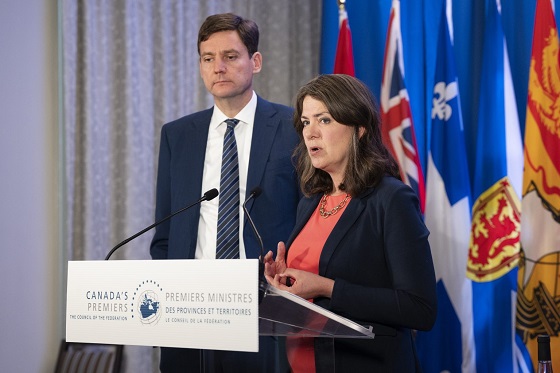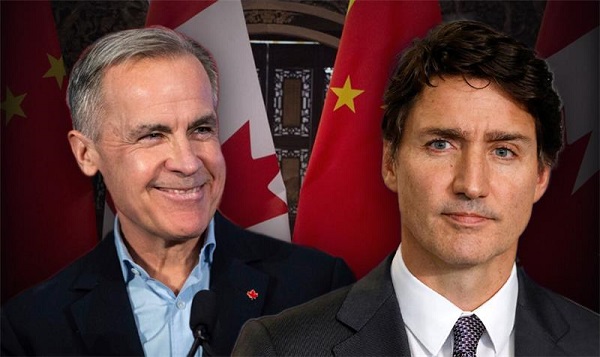Brownstone Institute
Who Is Wei Cai, German Public Health’s ‘Hidden’ Scientist from Wuhan?

From the Brownstone Institute
By
So, who exactly is Wei Cai, the scientific staff member of Germany’s public health authority, the Robert Koch Institute (RKI), who, as revealed in hitherto hidden minutes of the institute’s “COVID-19 Crisis Group,” comes from none other than Wuhan? And when I say “hitherto hidden minutes,” I mean hidden precisely in the ostensible leak of the unredacted “RKI Files.” For, as I discussed in a recent article, the file in question was not included among the supposedly “complete minutes” assembled by Aya Velazquez, the prostitute-turned-journalist and anti-Covid-measure activist who unveiled the documents at a highly-publicized press conference in Berlin on July 23rd.
As discussed in a postscript to that article, although I have asked her, I have not received a coherent answer from Velazquez as to how she could have overlooked these minutes, which are indeed the minutes of the very first RKI “crisis group” meeting of which we have a public record.
Be that as it may, the reason why the revelation of the RKI’s link to Wuhan is important – and why German authorities may have preferred that it remain secret – is because, as I have documented in, among other places, my ‘The Greatest Story Never Told,’ Germany in fact had a very active publicly-funded research partnership in virology with several research institutions in Wuhan, including the Wuhan Institute of Virology (WIV).
Indeed, the German-Chinese virology network, known as the “Sino-German Transregional Collaborative Research Centre” or TRR60, gave rise to a full-fledged German-Chinese virology lab, not only right in Wuhan but indeed right in what is regarded as the area of the initial outbreak of Covid-19 in the city. For this and other (microbiological) reasons outlined in my ‘The Smoking Gun in Wuhan,’ the members of the German-Chinese virology partnership ought to be prime suspects in any genuine investigation into a possible laboratory origin of SARS-CoV-2. But, instead, they have been completely ignored in favour of suspects in far-off places like Chapel Hill, North Carolina.
The below photo shows various members of the partnership, as well as associated German and Chinese luminaries in the field of virology. It was taken in 2015 at a “Sino-German Symposium on Infectious Diseases” in Berlin organised by the German Co-Director of TRR60, Ulf Dittmer. Dittmer is the bald man in the middle of the picture. None other than Christian Drosten, the German designer of the ‘gold standard’ SARS-CoV-2 PCR test, and Shi Zhengli, the WIV’s renowned bat coronavirus expert, can be seen together in the lower left-hand corner of the picture.

Other notables include Chen Xinwen, the then-director of the WIV. Chen is the small, somewhat buck-toothed man in the lower right-hand corner. He was a member of TRR60. The young woman with the long hair next to Shi Zhengli appears to be the current Director of the WIV, Wang Yanyi. The former President of the Robert Koch Institute, Reinhard Burger, is also in the picture. He is the white-haired man with the blue shirt near the centre of the group.
Given the WIV’s famed practice of gain-of-function research, it is worth noting that this get-together took place precisely during the American moratorium on such research. It is also worth noting that Christian Drosten himself, as touched upon in my ‘The Greatest Story‘, has coordinated a German research project on the MERS coronavirus involving gain-of-function experiments. Indeed, that ‘RAPID’ project got underway just two years after the Berlin get-together and likewise while the American moratorium still remained in place.
So, did Wei Cai have anything to do with the German-Chinese virology network? Well, yes, from her publications, we know that she did. Thus, she is a co-author with Michael Roggendorf of this 2013 paper on PCR detection of Hepatitis and HIV infections. Roggendorf is none other than the founder of the German-Chinese partnership. He is the white-haired man with the red bowtie next to RKI president Burger in the above photo. The former Chair of the Department of Virology at Essen University Hospital, he would cede his position as German Co-Director of TRR60 to his colleague Dittmer in 2013. Essen University Hospital is the lead German institution in the German-Chinese virology partnership.
Roggendorf can be seen below receiving the “Chime Bell” award from the Governor of Hubei Province in 2016 in honor of his contributions to the German-Chinese partnership. Wuhan is the capital of Hubei Province.

In early 2020, Wei Cai would then appear as co-author with Christian Drosten on a paper about the famous first cluster of Covid-19 cases in Germany. As discussed in my series of articles here, here, and here, it was precisely this cluster that first raised the spectre of ‘asymptomatic spread’ of Covid-19, even though – contrary to what was claimed by Drosten and other German authors in a letter to the New England Journal of Medicine – Patient Zero was not in fact asymptomatic and none of the members of the cluster appear to have been particularly ill.
As touched upon in my previous article, Wei Cai would then go on to complete a PhD in Medicine at Drosten’s Charité University Hospital in Berlin, although under the direction of her supervisor in the Infectious Diseases Unit of the RKI, Walter Haas. Per her Linked-In page (hat-tip: FrauHodl), she completed a first degree in medicine at the Hubei University of Chinese Medicine in Wuhan in 2000 before going to Germany to do a master’s in public health in Bremen.
It should be noted that Wei Cai is an epidemiologist, not a virologist. Hence, she would not have been involved in the sort of laboratory experimentation on viruses that was being conducted under the aegis of TRR60 in Wuhan.
Nonetheless, the questions remain. Why was the very existence of the RKI’s staff member from Wuhan redacted in the original official release of the “RKI Files?” Why were the minutes in question, now unredacted and revealing her existence, hidden in the ostensible leak, as if the leakers were somehow sensitive to the Government’s concerns? And why, finally, do German – unlike American – links to Wuhan appear to be off-limits for German media, both traditional and new? Why the omertà?
Republished from The Daily Sceptic
Brownstone Institute
Bizarre Decisions about Nicotine Pouches Lead to the Wrong Products on Shelves

From the Brownstone Institute
A walk through a dozen convenience stores in Montgomery County, Pennsylvania, says a lot about how US nicotine policy actually works. Only about one in eight nicotine-pouch products for sale is legal. The rest are unauthorized—but they’re not all the same. Some are brightly branded, with uncertain ingredients, not approved by any Western regulator, and clearly aimed at impulse buyers. Others—like Sweden’s NOAT—are the opposite: muted, well-made, adult-oriented, and already approved for sale in Europe.
Yet in the United States, NOAT has been told to stop selling. In September 2025, the Food and Drug Administration (FDA) issued the company a warning letter for offering nicotine pouches without marketing authorization. That might make sense if the products were dangerous, but they appear to be among the safest on the market: mild flavors, low nicotine levels, and recyclable paper packaging. In Europe, regulators consider them acceptable. In America, they’re banned. The decision looks, at best, strange—and possibly arbitrary.
What the Market Shows
My October 2025 audit was straightforward. I visited twelve stores and recorded every distinct pouch product visible for sale at the counter. If the item matched one of the twenty ZYN products that the FDA authorized in January, it was counted as legal. Everything else was counted as illegal.
Two of the stores told me they had recently received FDA letters and had already removed most illegal stock. The other ten stores were still dominated by unauthorized products—more than 93 percent of what was on display. Across all twelve locations, about 12 percent of products were legal ZYN, and about 88 percent were not.
The illegal share wasn’t uniform. Many of the unauthorized products were clearly high-nicotine imports with flashy names like Loop, Velo, and Zimo. These products may be fine, but some are probably high in contaminants, and a few often with very high nicotine levels. Others were subdued, plainly meant for adult users. NOAT was a good example of that second group: simple packaging, oat-based filler, restrained flavoring, and branding that makes no effort to look “cool.” It’s the kind of product any regulator serious about harm reduction would welcome.
Enforcement Works
To the FDA’s credit, enforcement does make a difference. The two stores that received official letters quickly pulled their illegal stock. That mirrors the agency’s broader efforts this year: new import alerts to detain unauthorized tobacco products at the border (see also Import Alert 98-06), and hundreds of warning letters to retailers, importers, and distributors.
But effective enforcement can’t solve a supply problem. The list of legal nicotine-pouch products is still extremely short—only a narrow range of ZYN items. Adults who want more variety, or stores that want to meet that demand, inevitably turn to gray-market suppliers. The more limited the legal catalog, the more the illegal market thrives.
Why the NOAT Decision Appears Bizarre
The FDA’s own actions make the situation hard to explain. In January 2025, it authorized twenty ZYN products after finding that they contained far fewer harmful chemicals than cigarettes and could help adult smokers switch. That was progress. But nine months later, the FDA has approved nothing else—while sending a warning letter to NOAT, arguably the least youth-oriented pouch line in the world.
The outcome is bad for legal sellers and public health. ZYN is legal; a handful of clearly risky, high-nicotine imports continue to circulate; and a mild, adult-market brand that meets European safety and labeling rules is banned. Officially, NOAT’s problem is procedural—it lacks a marketing order. But in practical terms, the FDA is punishing the very design choices it claims to value: simplicity, low appeal to minors, and clean ingredients.
This approach also ignores the differences in actual risk. Studies consistently show that nicotine pouches have far fewer toxins than cigarettes and far less variability than many vapes. The biggest pouch concerns are uneven nicotine levels and occasional traces of tobacco-specific nitrosamines, depending on manufacturing quality. The serious contamination issues—heavy metals and inconsistent dosage—belong mostly to disposable vapes, particularly the flood of unregulated imports from China. Treating all “unauthorized” products as equally bad blurs those distinctions and undermines proportional enforcement.
A Better Balance: Enforce Upstream, Widen the Legal Path
My small Montgomery County survey suggests a simple formula for improvement.
First, keep enforcement targeted and focused on suppliers, not just clerks. Warning letters clearly change behavior at the store level, but the biggest impact will come from auditing distributors and importers, and stopping bad shipments before they reach retail shelves.
Second, make compliance easy. A single-page list of authorized nicotine-pouch products—currently the twenty approved ZYN items—should be posted in every store and attached to distributor invoices. Point-of-sale systems can block barcodes for anything not on the list, and retailers could affirm, once a year, that they stock only approved items.
Third, widen the legal lane. The FDA launched a pilot program in September 2025 to speed review of new pouch applications. That program should spell out exactly what evidence is needed—chemical data, toxicology, nicotine release rates, and behavioral studies—and make timely decisions. If products like NOAT meet those standards, they should be authorized quickly. Legal competition among adult-oriented brands will crowd out the sketchy imports far faster than enforcement alone.
The Bottom Line
Enforcement matters, and the data show it works—where it happens. But the legal market is too narrow to protect consumers or encourage innovation. The current regime leaves a few ZYN products as lonely legal islands in a sea of gray-market pouches that range from sensible to reckless.
The FDA’s treatment of NOAT stands out as a case study in inconsistency: a quiet, adult-focused brand approved in Europe yet effectively banned in the US, while flashier and riskier options continue to slip through. That’s not a public-health victory; it’s a missed opportunity.
If the goal is to help adult smokers move to lower-risk products while keeping youth use low, the path forward is clear: enforce smartly, make compliance easy, and give good products a fair shot. Right now, we’re doing the first part well—but failing at the second and third. It’s time to fix that.
Addictions
The War on Commonsense Nicotine Regulation

From the Brownstone Institute
Cigarettes kill nearly half a million Americans each year. Everyone knows it, including the Food and Drug Administration. Yet while the most lethal nicotine product remains on sale in every gas station, the FDA continues to block or delay far safer alternatives.
Nicotine pouches—small, smokeless packets tucked under the lip—deliver nicotine without burning tobacco. They eliminate the tar, carbon monoxide, and carcinogens that make cigarettes so deadly. The logic of harm reduction couldn’t be clearer: if smokers can get nicotine without smoke, millions of lives could be saved.
Sweden has already proven the point. Through widespread use of snus and nicotine pouches, the country has cut daily smoking to about 5 percent, the lowest rate in Europe. Lung-cancer deaths are less than half the continental average. This “Swedish Experience” shows that when adults are given safer options, they switch voluntarily—no prohibition required.
In the United States, however, the FDA’s tobacco division has turned this logic on its head. Since Congress gave it sweeping authority in 2009, the agency has demanded that every new product undergo a Premarket Tobacco Product Application, or PMTA, proving it is “appropriate for the protection of public health.” That sounds reasonable until you see how the process works.
Manufacturers must spend millions on speculative modeling about how their products might affect every segment of society—smokers, nonsmokers, youth, and future generations—before they can even reach the market. Unsurprisingly, almost all PMTAs have been denied or shelved. Reduced-risk products sit in limbo while Marlboros and Newports remain untouched.
Only this January did the agency relent slightly, authorizing 20 ZYN nicotine-pouch products made by Swedish Match, now owned by Philip Morris. The FDA admitted the obvious: “The data show that these specific products are appropriate for the protection of public health.” The toxic-chemical levels were far lower than in cigarettes, and adult smokers were more likely to switch than teens were to start.
The decision should have been a turning point. Instead, it exposed the double standard. Other pouch makers—especially smaller firms from Sweden and the US, such as NOAT—remain locked out of the legal market even when their products meet the same technical standards.
The FDA’s inaction has created a black market dominated by unregulated imports, many from China. According to my own research, roughly 85 percent of pouches now sold in convenience stores are technically illegal.
The agency claims that this heavy-handed approach protects kids. But youth pouch use in the US remains very low—about 1.5 percent of high-school students according to the latest National Youth Tobacco Survey—while nearly 30 million American adults still smoke. Denying safer products to millions of addicted adults because a tiny fraction of teens might experiment is the opposite of public-health logic.
There’s a better path. The FDA should base its decisions on science, not fear. If a product dramatically reduces exposure to harmful chemicals, meets strict packaging and marketing standards, and enforces Tobacco 21 age verification, it should be allowed on the market. Population-level effects can be monitored afterward through real-world data on switching and youth use. That’s how drug and vaccine regulation already works.
Sweden’s evidence shows the results of a pragmatic approach: a near-smoke-free society achieved through consumer choice, not coercion. The FDA’s own approval of ZYN proves that such products can meet its legal standard for protecting public health. The next step is consistency—apply the same rules to everyone.
Combustion, not nicotine, is the killer. Until the FDA acts on that simple truth, it will keep protecting the cigarette industry it was supposed to regulate.
-

 Alberta1 day ago
Alberta1 day agoFrom Underdog to Top Broodmare
-

 Energy2 days ago
Energy2 days agoPoilievre says West Coast Pipeline MOU is no guarantee
-

 Alberta2 days ago
Alberta2 days agoWest Coast Pipeline MOU: A good first step, but project dead on arrival without Eby’s assent
-

 Alberta2 days ago
Alberta2 days agoCarney forces Alberta to pay a steep price for the West Coast Pipeline MOU
-

 Energy2 days ago
Energy2 days agoWill the New West Coast Pipeline MoU Lead to Results? Almost Certainly Not According to AI
-

 Business1 day ago
Business1 day agoHigher carbon taxes in pipeline MOU are a bad deal for taxpayers
-

 COVID-192 days ago
COVID-192 days agoCanadian government seeking to destroy Freedom Convoy leader, taking Big Red from Chris Barber
-

 Business1 day ago
Business1 day agoMan overboard as HMCS Carney lists to the right












